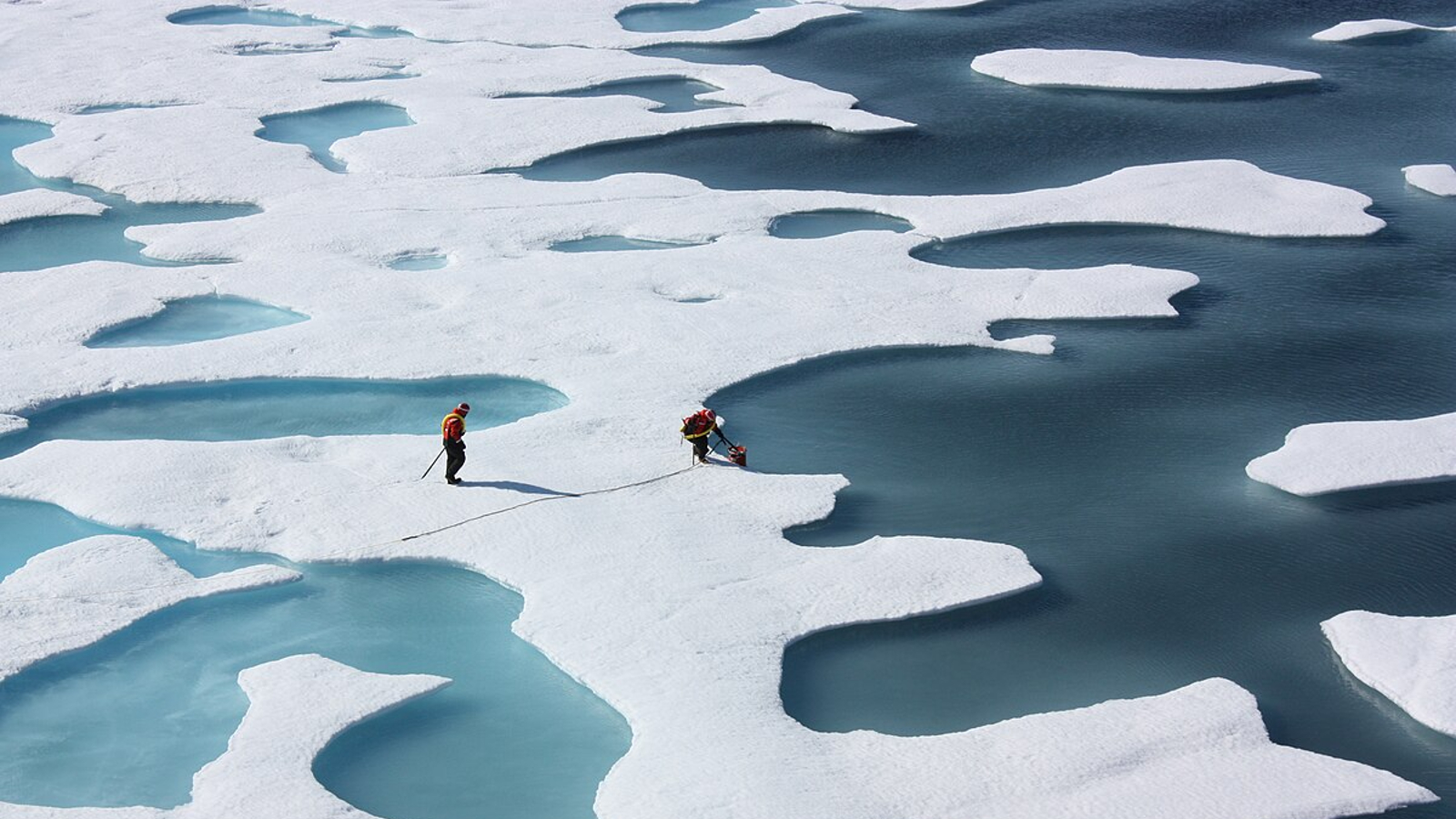FAST FACTS
Where is it? An unnamed glacier in southeastern Alaska
What is in the photo? A large puddle of water on top of the ice
What took the photo? NASA’s ER-2 aircraft
When was it taken? July 16, 2014
This aerial photo from 2014 shows what appears to be an unusually large and deep pool of vivid blue meltwater atop an unnamed glacier in Alaska. Similar melt ponds are becoming increasingly common in the Arctic due to climate change, further accelerating the rate at which the region is losing its ice.
The striking melt pond, dotted with hundreds of small icebergs, is about 700 meters wide at its widest point. The vibrant blue color of the pool makes it appear as if it is exceptionally deep. However, this is probably just an illusion caused by the ice underneath. On average, melt ponds in the Arctic are only about 22 centimeters deep, according to a study 2022 study. However, it is unclear exactly how deep this pool is.
Zoomed out versions of the photo show that the melt pond was surrounded by nothing but snow for miles. Normally, melt ponds are close together in clusters. It is unclear what caused this pond to become so large in isolation.
The icy lagoon was spotted by the Multiple Altimeter Beam Experimental Lidar (MABEL) instrument aboard NASA’s ER-2 aircraft – a special research aircraft that can fly more than twice as high as commercial aircraft. The plane flew through the area as part of a wider study of Arctic melt ponds and took hundreds of similar photos. But according to sources, this pond was one of the largest observed NASA’s Earth Observatory.
Related: See the best images of Earth from space

Melt ponds form in late spring and early summer when heat thaws the ice and the resulting water collects in depressions in the ice. These characteristics have always been present in the Arctic. However, they have become much more common in recent years due to the effects of man-made diseases climate change.
The increasing appearance of melt ponds is concerning to researchers because the dark blue pools absorb much more sunlight than snow and ice. This causes the ponds to warm and more of the ice around them to melt, especially when they appear on fragile sea ice. This ‘positive feedback loop’ could eventually trigger a runaway effect where the melting rate increases exponentially.
As a result, the number of melt ponds that appear each summer is a good predictor of the minimum extent of Arctic sea ice in a year, or the point at which the region’s sea ice area is at its lowest. Mongabay recently reported this.
Despite the importance of monitoring these melt ponds, some researchers say we still don’t understand them enough to make such predictions.
In one Review article from 2023experts wrote that “limited observations of melt ponds are far from adequate,” leading to a “lack of knowledge at spatial and temporal scales” about when and where they form. This promotes uncertainty about their role in the climate crisis. However, this problem could be addressed by increasing the number of aerial observations of the Arctic and using artificial intelligence to sift through the data, the review authors claim.



